A bone belonging to a rare, yet well-known dinosaur was discovered in Southern Utah and has paleontologists excited by its discovery.
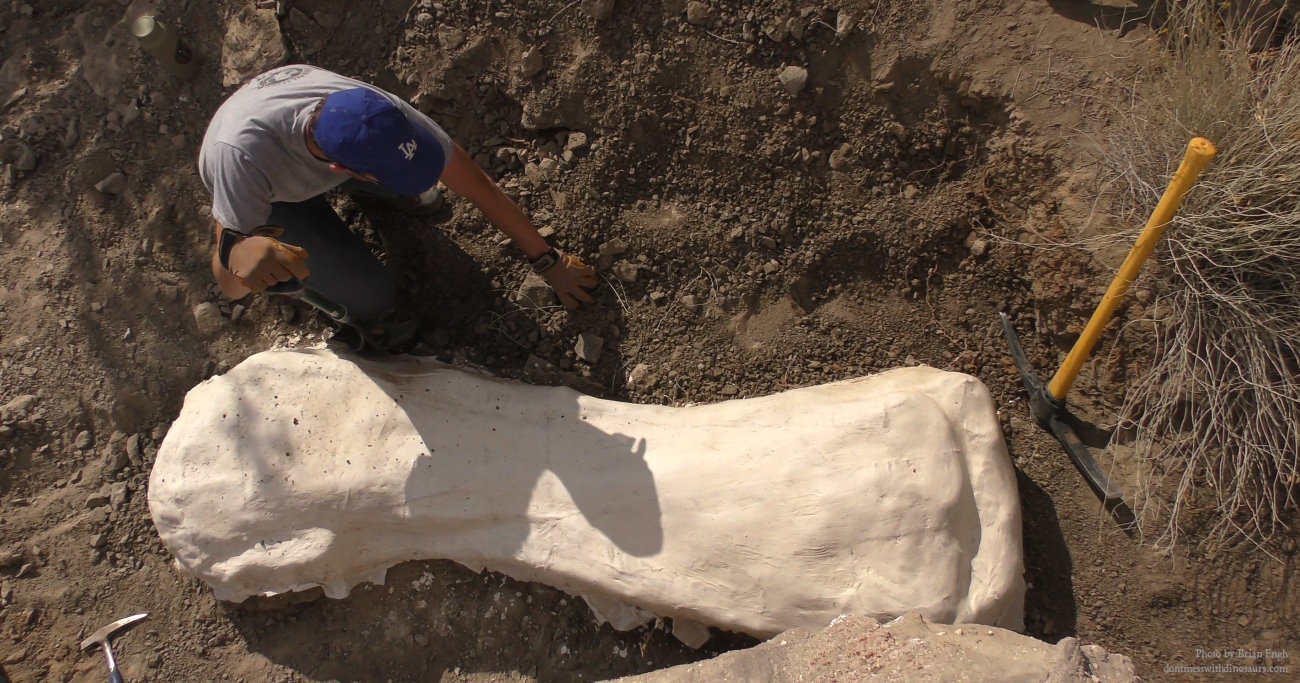
Utah State Parks reported that a 6-foot, 7-inch humerus bone belonging to a rare 30-ton Brachiosaurus was unearthed at a site in the Southern Utah desert last May by paleoartist Brian Engh. The team that removed the bone included paleontologists from the Utah Field House of the Natural History State Park Museum in Vernal, Utah, and the Western University of Health Sciences, in Pomona, California.

To protect it, the exact site is not being disclosed.
The recovered bone, the humerus, is the upper arm/leg bone for this towering creature. This is only the third Brachiosaurus humerus ever found – and the first in Utah, according to Utah State Parks.
Paleontologists putting adding plaster to the protective jacket placed around the Brachiosaurus bone found in Southern Utah, October, 2019 | Photo by Brian Engh, courtesy of Utah State Parks, St. George News
It’s an exciting find, John Foster, the curator of collections at the Utah Field House, told St. George News Wednesday.
“This is the first (Brachiosaurus) humerus found in over 60 years that’s also in pretty good condition,” Foster said.

The first Brachiosaurus humerus was found in 1900 in Grand Junction, Colorado, with the second being found in 1955. The 2019 find is the most complete of the three.
The giraffe-like Brachiosaurus is distinguished by its long front legs, deep chest and long neck. It is a cousin of other sauropods (large, long-necked dinosaurs) like the Brontosaurus and Diplodocus.
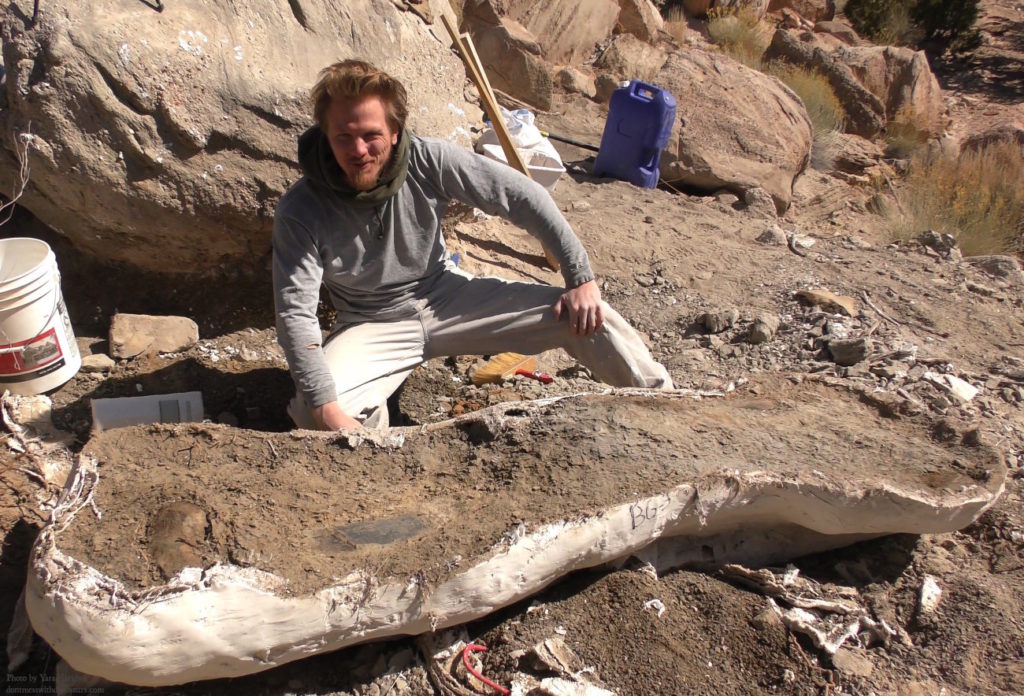
According to LiveScience.com, its unclear just how large the dinosaur was, but some estimates put it at over 80 feet long and 40-to-50 feet tall. The Brachiosaurus was also once declared to be the largest dinosaur ever found, but other sauropods are now believed to have been larger and heavier.
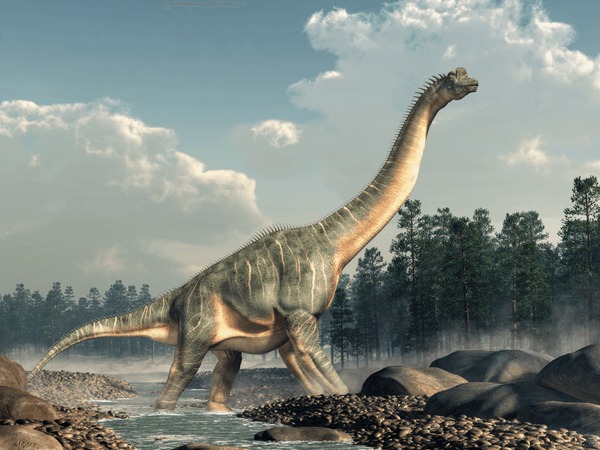
Foster said the Brachiosaurus was particularly rare for the time period it inhabited, and is estimated have been outnumbered by other dinosaurs, like the far more common Camarasaurus, by to 20-to-1. Over 200 examples of the Camarasaurus have been found in what is called the Morrison Formation, while only 10 known specimens of the Brachiosaurus have been found up to this point.
According to the National Park Service, the Morrison Formation is a rock unit that covers the Late Jurassic period – 155 million to 148 million years ago. It extends throughout the Western United States and contains a large amount of fossils. In addition to the Brachiosaurus and Camarasaurus, fossil remains of Stegosaurus, Allosaurus, Diplodocus and other dinosaurs have also been found in the formation.
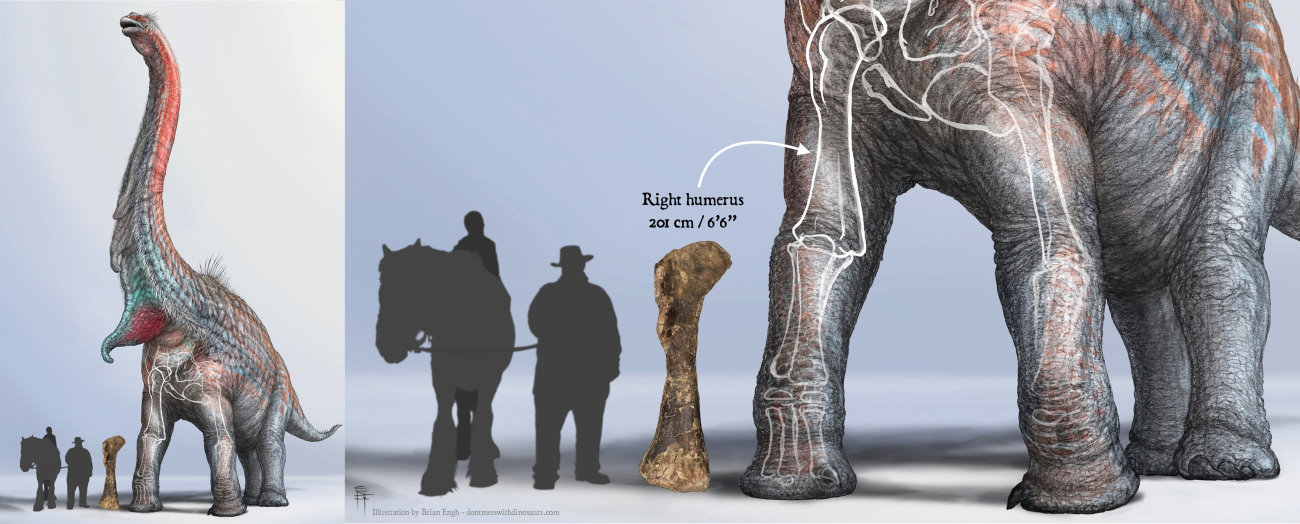
A rendering of what a Brachiosaurus could have looked like. | Art by Brian Engh, courtesy of Utah State Parks, St. George News
Another reason the find excited has paleontologists is that is it a rare chance to find a Brachiosaurus fossil in the wild, Foster said. The only places one can see the other recovered fossils is in a museum.
“It’s hard not to get excited about this,” Foster said.
After proper permitting was acquired by October, paleontologists were able to remove the Brachiosaurus bone from where it have been discovered.
The fossilized bone was covered in plaster and burlap to immobilize it within the encasing sand, soil and mudstone. It was dragged to a utility wagon and then hauled out of the remote site across rugged terrain by the Clydesdale horse team of Darla and Molly, led by Wes and Resha Bartlett of Naples, Utah, according to Utah State Parks.
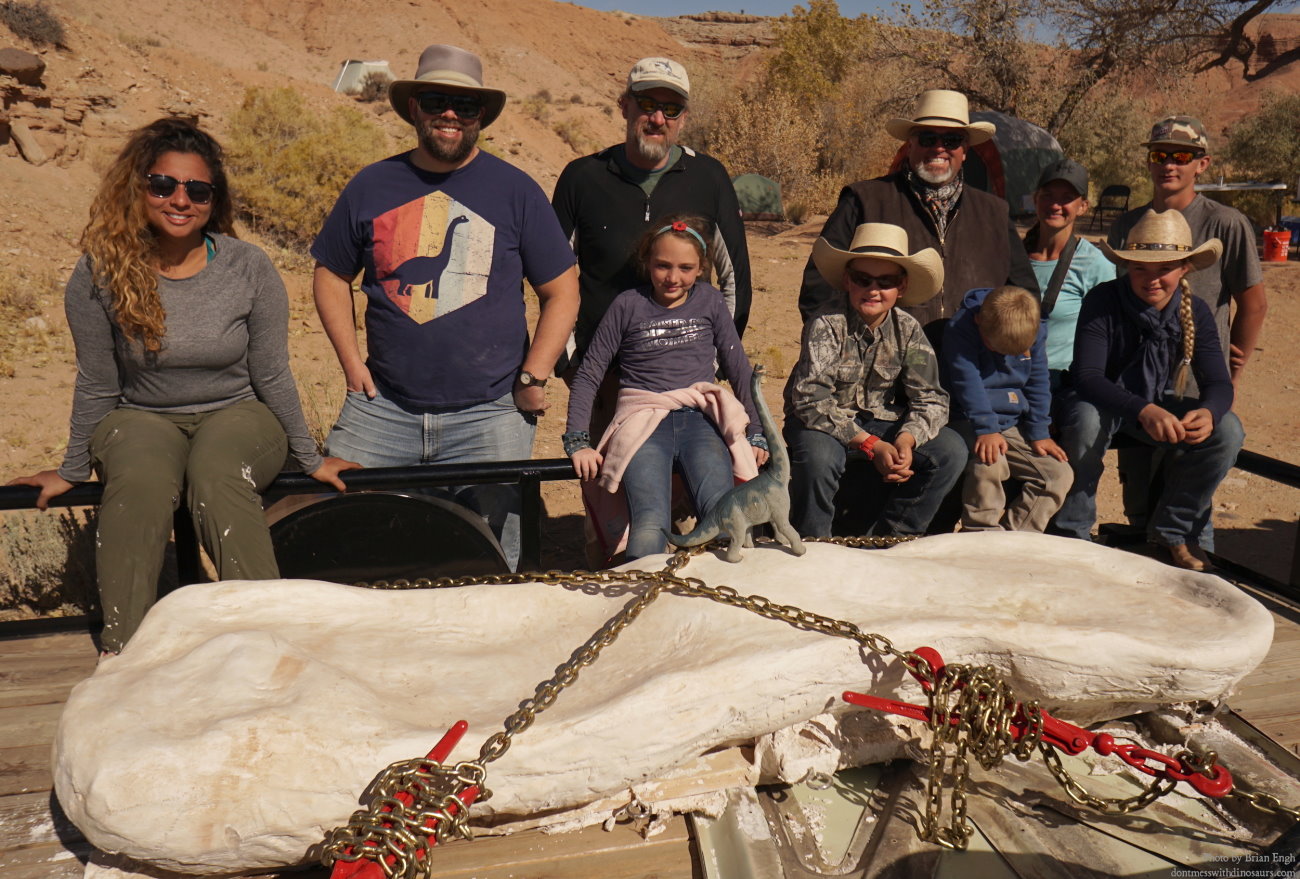
The paleontology team poses with the plaster-jacketed Brachiosaurus bone, Southern Utah, October 2019 | Photo by Brian Engh, courtesy of Utah State Parks, St. George News
In addition to the Brachiosaurus humerus, which is believed to have been located in the dinosaurs right front leg, the more fragmentary left humerus was found eroding down a nearby gulch, and several rib fragments and other bones were collected from the same area.
There are additional finds at the Brachiosaurus site paleontologists plan to return to and investigate in the near-future, Foster said.
For now, the Brachiosaurus bone is being prepared at the Utah Field House of National History, 496 E. Main St. in Vernal, where it was made available for public viewing Thursday.
The location of the Brachiosaurus find is being left vague to protect the integrity of the site for future excavation by paleontologists.
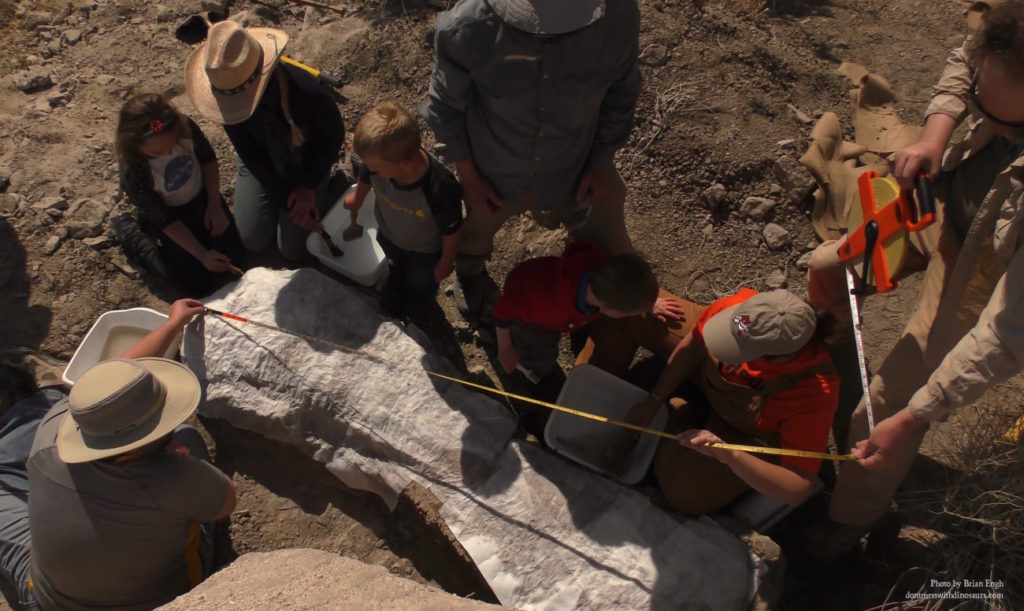
The paleontology team with the plaster-jacketed Brachiosaurus bone, Southern Utah, October 2019 | Photo by Brian Engh, courtesy of Utah State Parks, St. George News
The paleontology team poses with the plaster-jacketed Brachiosaurus bone, Southern Utah, October 2019 | Photo by Brian Engh, courtesy of Utah State Parks, St. George News

Paleontologists putting adding plaster to the protective jacket placed around the Brachiosaurus bone found in Southern Utah, October, 2019 | Photo by Brian Engh, courtesy of Utah State Parks, St. George News

Clydesdale horses were used to help transport the recovered Brachiosaurus bone from the rugged area where it was discovered by paleoartist Brian Engh, Southern Utah, October 2019 | Photo by Brian Engh, courtesy of Utah State Parks, St. George News
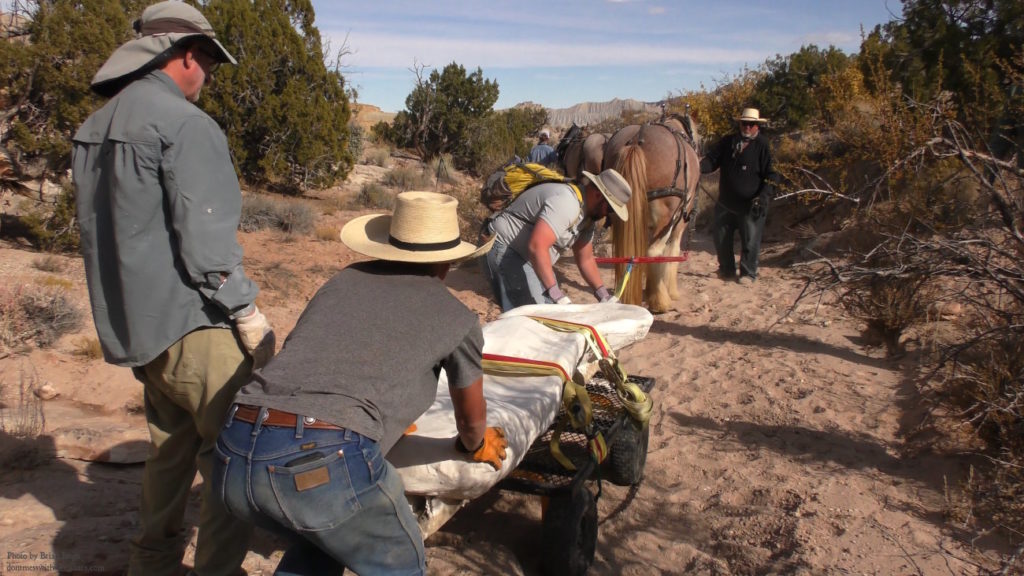
Clydesdale horses were used to help transport the recovered Brachiosaurus bone from the rugged area where it was discovered by paleoartist Brian Engh, Southern Utah, October 2019 | Photo by Brian Engh, courtesy of Utah State Parks, St. George News
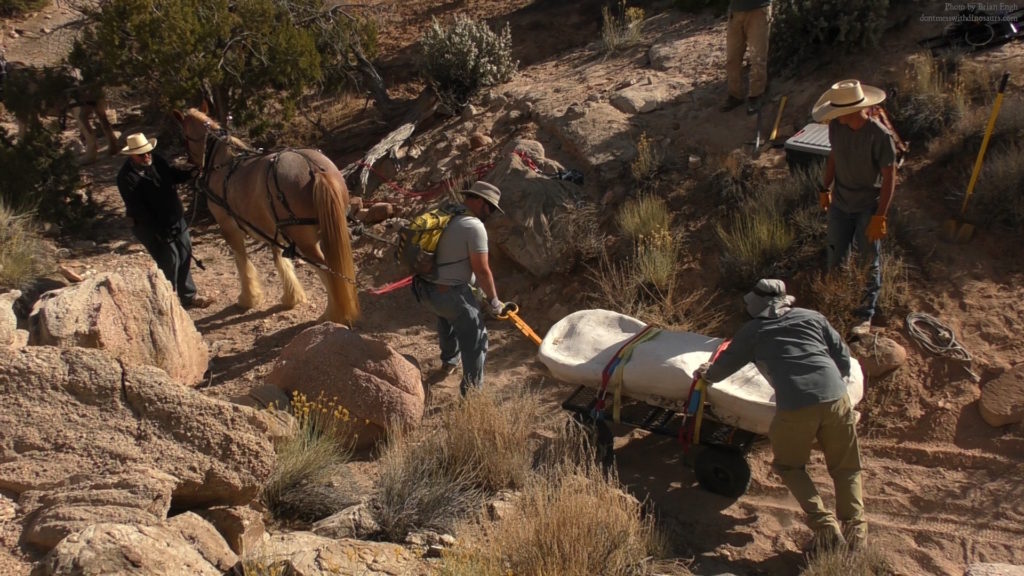
Clydesdale horses were used to help transport the recovered Brachiosaurus bone from the rugged area where it was discovered by paleoartist Brian Engh, Southern Utah, October 2019 | Photo by Brian Engh, courtesy of Utah State Parks, St. George News

Brian Engh poses with the plaster-jacketed Brachiosaurus bone, Southern Utah, October 2019 | Photo by Brian Engh, courtesy of Utah State Parks, St. George News
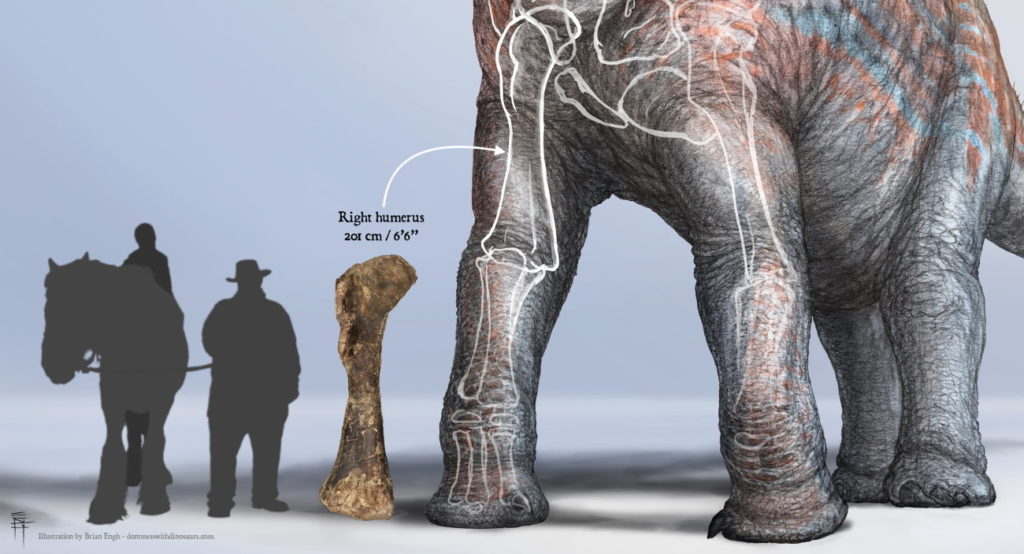
A rendering of what a Brachiosaurus could have looked like. Bone included for size comparison. | Art by Brian Engh, courtesy of Utah State Parks, St. George News

A rendering of what a Brachiosaurus could have looked like. | Art by Brian Engh, courtesy of Utah State Parks, St. George News
The plaster-jacketed Brachiosaurus leg bone prior to it being removed from the big site, Southern Utah, October 2019 | Photo by Brian Engh, courtesy of Utah State Parks, St. George News
A rendering of what a Brachiosaurus could have looked like. | Art by Brian Engh, courtesy of Utah State Parks, St. George News





